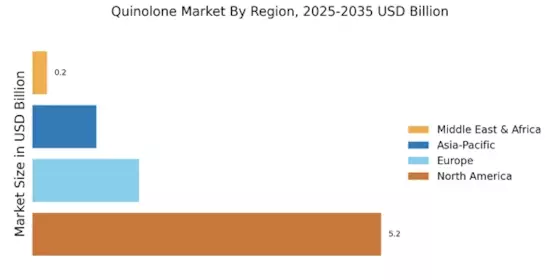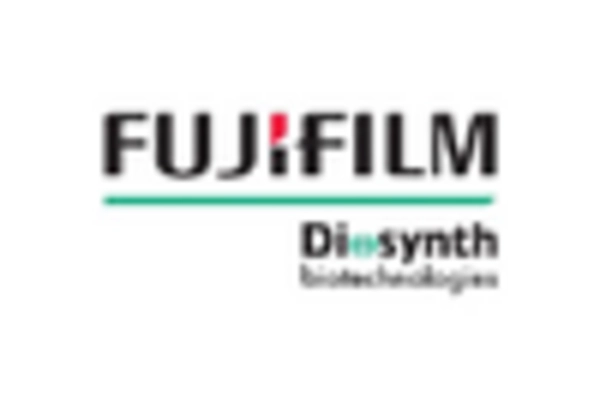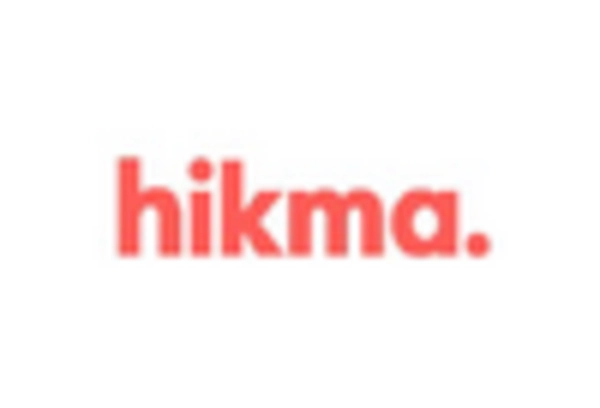Rising Healthcare Expenditure
An increase in healthcare expenditure is significantly influencing the Quinolone Market. As countries allocate more resources to healthcare, the availability and accessibility of antibiotics, including quinolones, improve. Data suggests that healthcare spending has been on the rise, driven by factors such as aging populations and the growing burden of chronic diseases. This trend is likely to enhance the demand for effective treatment options, including quinolone antibiotics, as healthcare systems strive to provide comprehensive care. The Quinolone Market may see a positive impact from this increased investment, as healthcare providers seek to ensure that patients have access to essential medications for treating bacterial infections.
Advancements in Pharmaceutical Research
Innovations in pharmaceutical research are propelling the Quinolone Market forward. The development of new formulations and delivery methods enhances the efficacy and safety profiles of quinolone antibiotics. Research indicates that novel quinolone derivatives are being explored to address the challenges posed by antibiotic resistance. These advancements not only improve therapeutic outcomes but also expand the potential applications of quinolones in treating various infections. The Quinolone Market is likely to benefit from ongoing research initiatives aimed at optimizing existing drugs and discovering new compounds. As pharmaceutical companies invest in research and development, the introduction of improved quinolone products may stimulate market growth and meet the evolving needs of healthcare providers.
Growing Awareness of Antibiotic Stewardship
The increasing emphasis on antibiotic stewardship programs is shaping the Quinolone Market. These programs aim to promote the appropriate use of antibiotics to combat resistance and improve patient outcomes. As healthcare providers become more aware of the implications of antibiotic misuse, there is a growing focus on prescribing effective antibiotics like quinolones judiciously. This trend may lead to a more strategic approach in the selection of antibiotics, potentially increasing the demand for quinolones that demonstrate efficacy against resistant strains. The Quinolone Market could benefit from this shift, as healthcare systems prioritize the responsible use of antibiotics to ensure their effectiveness for future generations.
Increasing Prevalence of Infectious Diseases
The rising incidence of infectious diseases is a primary driver for the Quinolone Market. As bacterial infections become more prevalent, the demand for effective antibiotics, including quinolones, escalates. According to recent data, bacterial infections account for a substantial percentage of global morbidity and mortality. This trend necessitates the development and distribution of antibiotics that can effectively combat resistant strains. The Quinolone Market is likely to experience growth as healthcare providers seek reliable treatment options for patients suffering from these infections. Furthermore, the increasing awareness of antibiotic resistance among healthcare professionals and patients may lead to a greater emphasis on the use of quinolones, which are known for their broad-spectrum activity against various pathogens.
Regulatory Support for Antibiotic Development
Regulatory bodies are increasingly supporting the development of new antibiotics, including quinolones, which is a crucial driver for the Quinolone Market. Initiatives aimed at expediting the approval process for novel antibiotics are being implemented to address the urgent need for effective treatments against resistant infections. This regulatory support may encourage pharmaceutical companies to invest in the research and development of quinolone antibiotics, leading to a more robust pipeline of products. As new quinolone formulations enter the market, the Quinolone Market is likely to experience growth, driven by the need for innovative solutions to combat the rising threat of antibiotic resistance.


















Leave a Comment